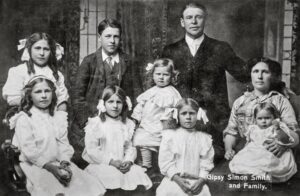Introduction
As this is my last article about the Smith family and, in case you missed the previous ones, I will now try to tie up the loose ends and put each of them into chronological order. The dates and family details given below have been obtained by accessing the official Births, Marriages, Death and Census Records in the UK and the Immigration and Emigration Records etc. in Canada. There is much information about this family on the internet but here I have focused on their conversions.
‘You see your calling brethren, that there are not many wise in a fleshly way, not many powerful, not many well-born; but God chose for Himself foolish things of the world that he might put to shame the wise, and the weak that He might put to shame the strong. He chose the low-born of the world, the despised and the nobodies that He might bring to nothing things of standing, so that nothing of the flesh might boast before Him.’ (1 Corinthians Chapter 1 verses 26-29 from New Presentation Bible NPB)
Although mostly forgotten or unheard of today, the Smith family’s story is far more compelling than I at first realised and I discovered that by 1937 thirteen descendants of the three converted gipsy brothers, Cornelius, Woodlock and Bartholomew, were preaching, singing or on missions across five continents. Until the crusades of the American evangelist Billy Graham, Rodney ‘Gipsy’ Smith, had preached, during his seventy year ministry, to more people than anyone before him. In 1888 he shared a platform at the Royal Albert Hall, London, England, with the American evangelists, D. L. Moody and I. Sankey, and later on in his ministry ‘Gipsy’ preached to a packed Royal Albert Hall for eight nights. While in London in 1924 he was the first evangelist to be asked by the BBC to make a radio broadcast and he carried on broadcasting for the rest of his life. He also wrote hymns and his singing was recorded by Columbia Records.
Part 1
The first generation of converted gipsies:
- Cornelius Smith (1831-1922)
- Woodlock Smith (c.1834-1882)
- Bartholomew Smith (1837-1884)
These three brothers were born in England to gipsy parents, James Smith (1808-1875), and Elizabeth (nee Odell) (1795-1873). There were six brothers in all and they were notorious for their wild behaviour. Cornelius, in particular, had a ready temper and was free with his fists, especially after a heavy drinking spree when buckets rather than bottles were the order of the day. Because of this he was often in scrapes with the law and was in and out of gaol.
The three brothers came to faith in the Lord Jesus Christ in a very remarkable way, for they discovered that each of them was seeking to ‘find Jesus, if He was to be found,’ at the same time. After a similarly long period of inward conflict they were all converted during the same week in April 1869; Cornelius and Bartholomew were together at a mid-week prayer meeting in a Mission Hall in Latimer Road, Shepherd’s Bush, West London, and the following Sunday, their brother, Woodlock, came to faith in the vestry of a Mr Varley’s Tabernacle in Notting Hill, West London.
Cornelius, describing his own conversion wrote:
“No human instrument pointed me the way; God began it and God finished it. I told the people that my wife had been dead three years and that I had been under deep conviction ever since that time. The change was so great that I walked about the hall looking at my flesh. To me it did not seem the same colour. My burden was gone and I told the people that I felt so light that if the room had been full of eggs I could have walked through them and not broken one of them. Glory be to God for His wondrous way in dealing with me. I went forth a new creature in Him.”
As the words of one of the old hymns go:
What a wonderful change in my life has been wrought,
Since Jesus came into my heart,
I have light in my soul for which long I had sought,
Since Jesus came into my heart.
I have ceased from my wand'ring and going astray,
Since Jesus came into my heart,
And my sins which were many are all washed away,
Since Jesus came into my heart.
Rufus H. McDaniel 1850-1940
That night, the joyful brothers, Cornelius and Bartholomew, sang all the way home. On arrival at the encampment Cornelius gathered his five surviving children around him and told them that the family would be commencing a new life and from that day forward he was true to his word. It is clear that his children adored him for when they were anticipating his return from a mission they would wait in the lane near the encampment and, on his arrival, would throw themselves eagerly into his arms. The dedication inside Rodney’s book, ‘Gipsy Smith, His Life and Work, By Himself” published in 1904 reads as follows:
‘To my father,
to whom, under God
I owe all that I am’
But I digress. The following morning Cornelius went outside and saw Bartholomew praying with his wife, Susan, who also put her trust in the Lord Jesus Christ. Bartholomew and his brother then went to pray inside a large tent where they were joined by other residents of the site, thirteen of whom were converted.
Woodlock was the last to be converted and following his conversion and not knowing how to proceed, the brothers sought the Lord’s guidance in prayer and decided that they would go out together as an evangelistic team in order to share the good news of the gospel of Jesus Christ, firstly amongst their fellow gipsies and then wider afield.

From then on they became known as the, ‘Converted Gipsy Brothers’, (pictured right, left to right, Bartholomew, Cornelius and Woodlock.)
The brothers’ first mission was to visit their parents to tell them the good news. This visit was instrumental in the conversion of both parents together with a ninety-one year old uncle who was staying with them.
‘The Pilgrim’s Progress’, written by John Bunyan (1628-1688), had a profound affect on the brothers and the fact that it was written by a tinker (a travelling mender of kettles, pots and pans) who had been in gaol only added to its attraction. Remarkably the book had been given to the brothers by the landlady of a public house they were visiting, who was, herself, also under conviction of sin.
Part 2
The second generation of gipsy evangelists:
Rodney 'Gipsy' Smith MBE
(1860-1947)
the son of Cornelius
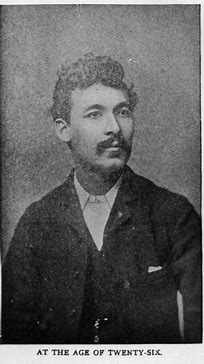
Rodney, the world-renowned evangelist, who became known simply as ‘Gipsy’, was the son of Cornelius Smith and Mary ‘Polly’ (nee Welch) (c.1831-1865); he was the fourth of their six children and was born on 31 March 1860 in a ‘bender’ tent in Epping Forest, East London. Rodney was five when his mother died from smallpox. Two weeks before her death she had given birth to a baby who survived for just two weeks. The family were devastated and completely bereft and Cornelius was beside himself with grief; Rodney adored his mother and said he never fully recovered from her loss.
He was sixteen years of age when he was converted whilst attending a small Primitive Methodist Chapel in Fitzroy Street, Cambridge where he heard a sermon by a Rev. George Warner. Rodney wrote, “Oddly enough, I cannot remember a word of what Mr Warner said, but I made up my mind in that service that if there was a chance I would publicly give myself to Christ. After the sermon a prayer meeting was held and Mr Warner invited all those who desired to give themselves to the Lord to come forward to the communion rail. I was the first to go forward. I do not know if anybody else was there or not. I think not. While I prayed the congregation sang,
“I do believe, I will believe,
That Jesus died for me,
That on the cross He shed His blood,
From sin to set me free.”
(William Cowper 1731-1800)
“Soon there was a dear old man beside me, with great flowing locks, who put his arm around me and began to pray with me and for me. I do not know his name. I do not know it even now, I told him that I had given myself to Jesus for time and eternity – to be his boy forever.”
He said,
“You must believe that He has saved you. ‘To as many as received Him, to them He gave power to be the sons of God; even them that believed in His name’. (John Chapter 1 verse 12).
“Well, I said, to my dear old friend, I cannot trust myself, for I am nothing, I cannot trust in what I have, for I have nothing; and so far as I can see my friends are as badly off as I am. So there and then I placed myself by simple trust and committal to Jesus Christ.”
Rodney went home to tell his father, who wept with joy at the good news. Turning to his son, Cornelius asked Rodney. “Tell me how you know you’re converted?” Rodney hardly knew what to say but placing his hand on his heart he said. “Daddy, I feel so warm here.” Rodney continued in his book, “I had got a little of the feeling the disciples had when they talked to Jesus on the way to Emmaus: ‘Did not our hearts burn within us?’ (Luke 24:32).”
Much later in life whilst in the USA, a man approached Rodney and started to feel the ‘bumps’ on his head in order to find the secret of his success. Rodney took the man’s hand and placed it over his heart and said, “This is where you need to feel.”
Each of Rodney’s brothers, sisters and in-laws were involved in Christian work apart from Matilda (Tilly), the youngest, who was a backslider for twenty five years, but who was joyfully restored to faith under her brother’s ministry.
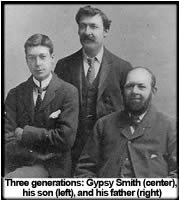
Gipsy worked as a ‘Missioner’ for the National Council of Free Churches and whilst in this role, the Rev. F. B. Meyer (1847-1929), on hearing him preach, wrote, “I shall never forget one evening when the father of the evangelist was present on the platform, and seemed to be adding the force of his own devout, fervent spirit with every word uttered by his son. Our beloved friend enjoyed unusual liberty that night. It seemed as though the fragrance and music of his own early life were being wafted like a fresh breeze to the audience which was melted in tears or stirred to enthusiasm.”
A Dr Clifford wrote, “The message of the evangelist goes straight to the heart of the Gospel, and his methods are as plain as the gospel is clear. He has no fads. He is not a victim of vagaries. He does not air any visionary theories. He knows his work and does it. He does not quarrel with pastors and call it preaching the gospel. He is their helper… There is a tear in his voice. He moves the heart of his audience to its utmost depth. But he never forgets that man has an intellect, and thinks and reasons; and when the hearer is most roused to cross the Rubicon he holds him in thought as to the meaning of the step he is taking, tells him that going into the inquiry room – important as that is as a definite and distinct choice of discipleship to Christ – is only a beginning, and must be followed by a resolute, patient and thorough-going obedience to Christ.“
Gipsy Simon Smith (1875-1943) son of Bartholomew and cousin to Rodney
My great uncle Simon was the son of Bartholomew Smith and Susan (Nee Lee) (1839-1926) and it came as a surprise to find that they, in fact, had nineteen children and not the twelve that was originally thought. Simon, who was born on 25 July 1875, was their eighth child. Unlike his cousin Rodney, who was fifteen years his senior, Simon was born into a Christian home and came under the influence of the gospel of Jesus Christ from an early age and knew many hymns by heart.
He said that he was born in the middle of Epping Forest and noted in his book, ‘The Adventures of a Gipsy Boy’ (London 1924),
“I was born on wheels and have been going ever since. My early years were spent in about the same way as that of the average gipsy boy. uneducated, a member of a tribe of superstitious, illiterate gipsies.”
Simon had some education for when Bartholomew built a little home for his family in Cobbold Road, Leytonstone, Essex, (Simon and his mother pictured below) he sent Simon to school in the hope that he would learn to read and, in so doing, be able to read the bible to his father, who was hungry for the Word of God. This scheme, however, never got off-the-ground for Simon was always too busy doing other things.
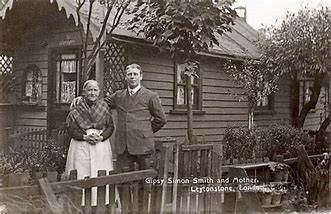
In about 1887 at the age of eleven and two years after his father’s death in 1884, Simon visited Dr Barnardo, whom he described as a little man with a big heart, at his orphanage in Shoreditch, East London, England, and asked him if he could go to Canada to earn some money to send home to help his widowed mother. Dr Barnardo said to Simon, “God bless you my boy, you shall go.” His wish was granted and, at that time, he saw Canada as the promised land, although the two years he spent there were not his happiest. At the age of fourteen he therefore returned to England and found employment with a horse dealer. He loved horses and with his quiet, gentle manner, he found he was able to control some of the most unmanageable steeds.
When he was 17, and with a few dollars in his pocket, he decided to travel in steerage to the USA via Rotterdam in Holland, an experience he described as, ‘Not a season of joy’, hoping to find work on a horse ranch. This he did, but it was not long before he was ready to move on again describing himself as a rolling stone at that time. His travels took him to Mexico City where he witnessed with horror a bull fight in which six bulls and eleven horses were killed.
Guatemala and Honduras were next on his itinerary and it was whilst in the latter that he was stricken with a fever and almost died. He wrote, “There in a hut of banana branches under the coconut trees I thought the end was near.” On recovery, he returned to England and, once again, found work with horses, eventually trading them between the USA and UK which meant frequent travel across the Atlantic.
Time moved on and the next big event in his life was his marriage on 1 August 1897 at St. John the Baptist Church Leytonstone, Essex, to my great-aunt, Blanchard (Blanche) Louise Mackenzie (1879-1971). Essex. Simon was 22 and Blanche was 18. Like Simon, Blanche, who was born on 7 June 1879, came from a very large family; she was the eleventh of eighteen children of William Mackenzie (1829-1902) a wood letter-cutter, and his wife Charlotte Isabella (Clara) Partridge (1841-1933).
By this time Simon, who was a shrewd businessman, was self-employed, working as a hansom cab driver in London. As his seat was above his passengers he would tell his family, ‘Cream always rises to the top!’ He had a ready sense of humour, as did his cousin, Rodney.
In his early adulthood Simon spent his free time at musical halls, card tables and the like, but in his work ferrying London’s night life to and from various places of amusement he witnessed at first hand, some of the louche and sordid goings-on which some of the other cab drivers were drawn into. As a happily married family man, this held no attraction for him, in fact, quite the reverse.
He was now working seven days a week with Saturday nights and Sunday mornings being the most lucrative. He was becoming increasingly aware that, with his growing family, he needed to spend more time with them, but knew he needed to work long hours in order to provide for them. His life, however, was about to move in another direction completely, for the Lord began to move in his life.
Spiritual awakenings
On one particularly clear and still Sunday morning in 1900, whilst out in his cab he heard the words of a hymn, written by Charles Wesley, being sung:
'Jesus Lover of my soul,
Let me to Your bosom fly.'
Simon discovered that a group of people had gathered for an open-air meeting before their usual service and he wrote, “The words seemed to pierce to my very soul. Jesus loves my soul! Jesus loves my soul!” He realised that in spite of his careless and rebellious life, Jesus loved his soul none the less and, like his uncle Cornelius before him, he put his horse back in the stable and decided that he would never work again on a Sunday. This was a difficult and costly thing for him to do.
Spiritual warfare began and for days his life became one of misery as he sought the peace that he knew was there, but seemed just beyond his reach.
At that time Simon’s cousin, Rodney ‘Gipsy’ Smith was conducting a series of meetings in a nearby town and Simon attended one of the Sunday evening services and when the invitation was given he was one of the first to respond. Although he went forward, he left the meeting still groping in spiritual darkness and longing for that inner peace.
The following Sunday, once again, he was to be found in a chapel near his home still earnestly seeking for his soul’s salvation. It was at the close of the service and during the invitation that he cried silently to God, “Oh, God, give me light, give me the assurance of salvation, give it to me now before I leave this church.” As he agonised the answer came and he said, “I felt that I had received what I had so long craved.” At that moment he felt someone touch his shoulder and, looking up, saw the minister, who had just left the pulpit, standing beside him. He asked, “Are you converted?” “Yes.” Simon answered, “How long?” said the minister, “Just this moment,” Simon replied.
“That night,” Simon recalled, “the light came into my soul, I was indeed turned from darkness to light, and from the power of Satan unto God.” He went home and told Blanche of his conversion and started to have a time of daily prayer and Bible Study; He was 25.
After this life-changing experience Simon was invited to speak at one of the meetings held by the London City Mission, an organisation in which his father, Bartholomew, had also been involved. Simon simply gave his personal testimony telling of what God had done in his life and after this experience he became eager to speak at every opportunity and was increasingly involved in the work of the Mission. Meanwhile, he continued working as a cab driver but his hours often clashed with those of the meetings so he took a day job working, once again, with horses.
He attended a two-year course at the London Bible college which was a requirement for anyone wishing to engage in full-time work with the London Missionary Society. On completion of the course Simon laboured for six years amongst some of the neediest and most down-trodden members of society.
He now felt the time had come to expand his ministry and in December 1912 he, Blanche, and their seven surviving children set sail from Bristol, England to Montreal, Canada. The picture below was taken just prior to their departure and includes, Simon and Blanche and their son William, together with their six daughters, Ada, Ruby, May, Lily, Violet and baby Ivy. Another daughter, Marguerite and a son Donald were born in Canada. (Their first child James Victor died in infancy as did their daughter Lily.)
On arrival they lived on an army base in Nova Scotia and then, a couple of months later, they moved to Ontario.
Simon travelled on his missions in his home-made caravan (pictured below) and this card reveals that he even had his own postmark.
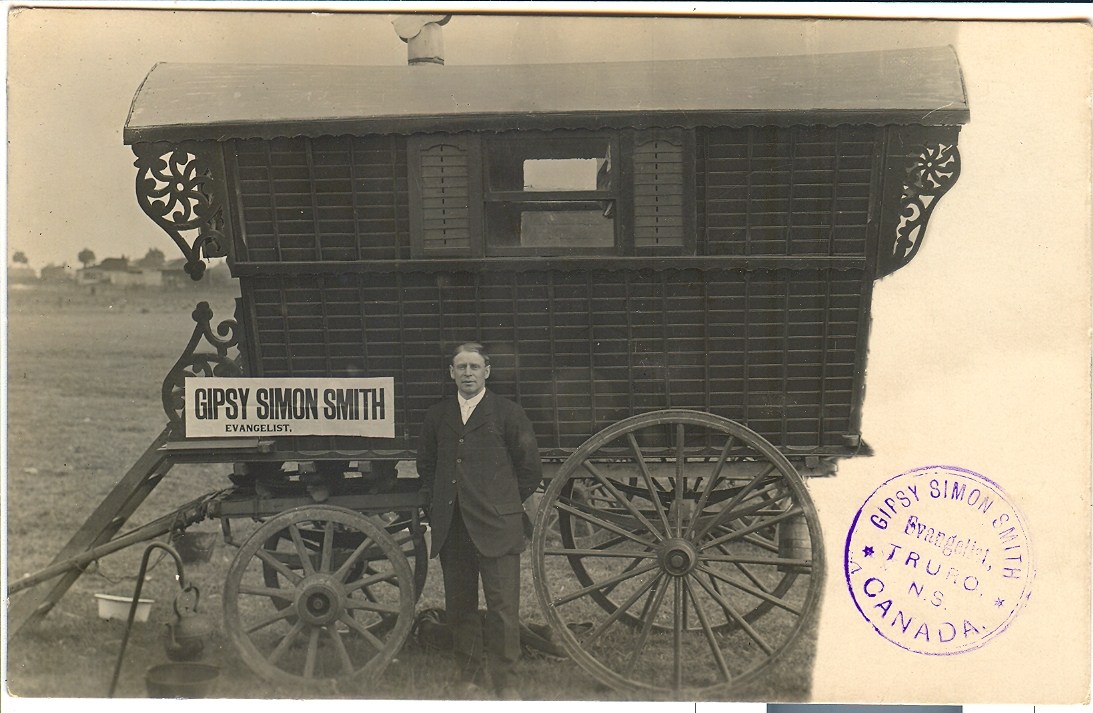
Not all of his missionary endeavours were welcome and at times he faced considerable hostility. The following incident, however, highlights his quick thinking. Word had reached Simon that a ‘certain person’ was planning to attend the mission meeting that night in order to disrupt it. On discovering who the individual was, Simon was there to meet and greet him at the door of the church. He then proceeded to take the man into his confidence telling him that word had reached him that troublemakers were due to be there that evening and would he be good enough to lend a hand and sit on the platform in readiness to deal with them. The man duly complied and the meeting passed off peacefully.
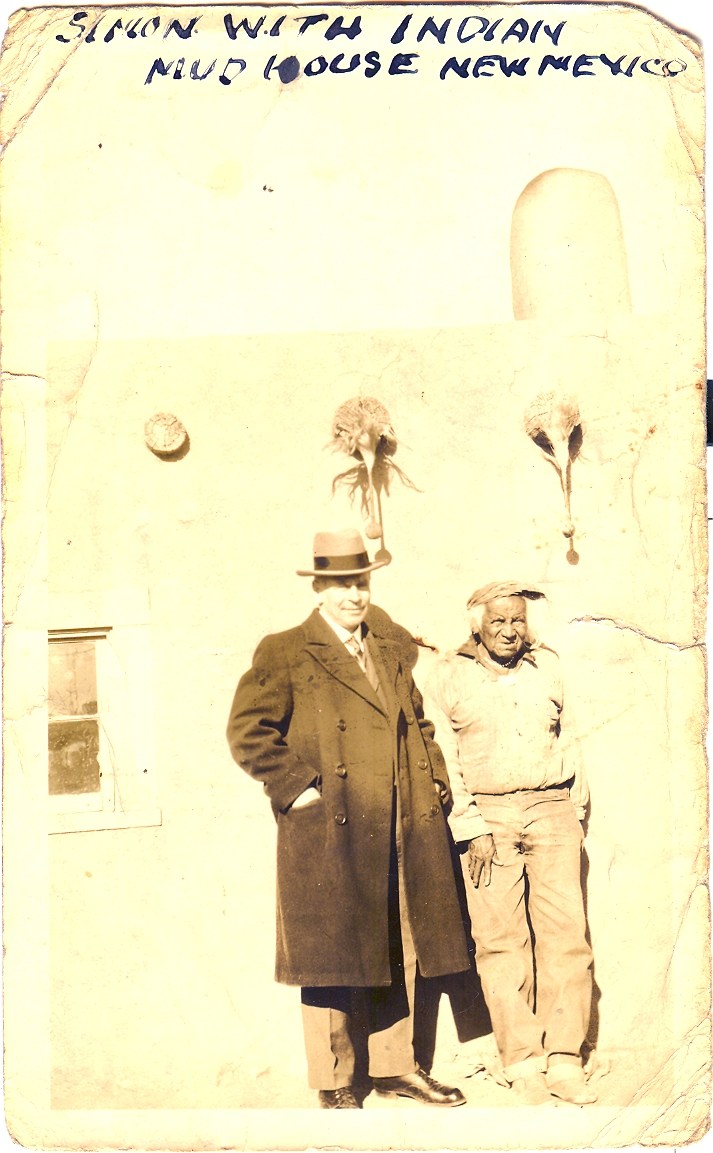
(Great Uncle Simon and Great Aunt Blanche kept in contact with their respective families in England and my mother recalled attending a meeting conducted by ‘uncle Simon’ at the London City Mission in 1927. She was about fourteen years old and here her first spiritual awakenings occurred.)
Simon continued his itinerant ministry in Canada and the USA, preaching the gospel at tent meetings and churches until his death in 1943 at the age of 68. He was buried in the Woodland Cemetery, London, Ontario, Canada. Blanche who died in 1971 at the age of 92 was buried beside him.
Finally, I will quote a passage from the postscript to Rodney ‘Gipsy’ Smith’s book:
“I have had rich and strange experiences. I have lived in many houses, the guest of many sorts and conditions of people. I have been presented to two Presidents of the United States, dined with bishops and archbishops…In my study hangs a letter from her Late Majesty the Queen (Victoria), and one from a royal Duchess, but the dearest thing in my house are the two pictures that adorn the walls of my bedroom. One is the picture of the waggon in which my mother died and the other of a group of gipsies. I never sleep in that room without looking at those pictures and saying to myself, “Rodney, you would have been there today but for the grace of God. Glory to His name for ever.”
The End
